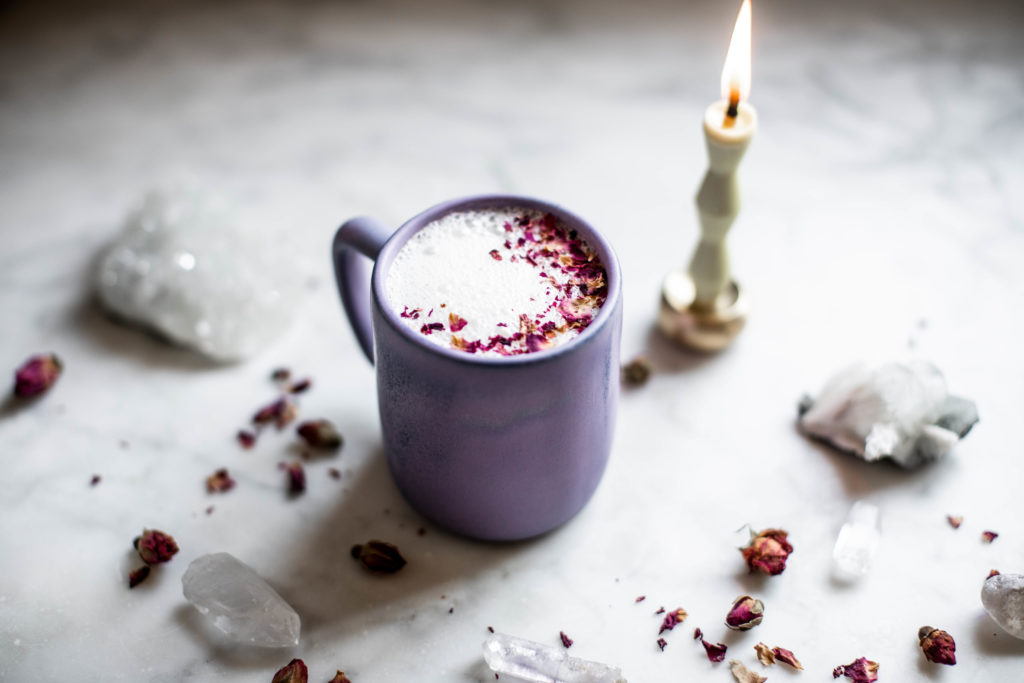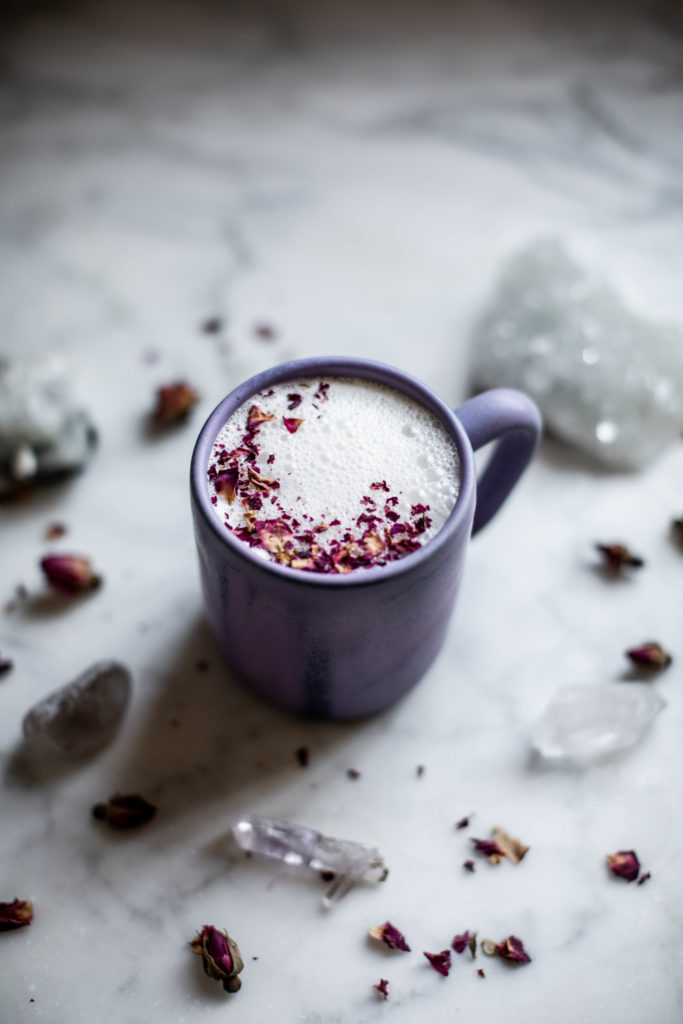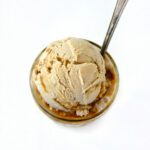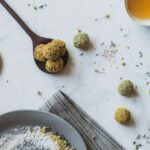
Hey, Local Milk family! It’s your devoted herbalist Lauren Haynes of Wooden Spoon Herbs, back for my second installation of “Herbs for…”. Today we’re chatting about herbs for managing stress and anxiety. Whether you’re running a business, chasing down a toddler, or having trouble coping with everyday life, stress has a tendency to sneak in and start calling your body home. Stress and anxiety manifest not only mentally, but physically as well, and there are several all-natural ways to help your body prepare for and process times of stress in a more healthy, sustainable way.
My Journey with Managing Stress & Anxiety
As a small business owner, I often feel like I’m drowning in stress. And as an herbalist, I’m always researching new (and often generations old) ways to cope. It’s definitely a journey! I’ve had times where I couldn’t get out of bed without getting dizzy from stress, times I’ve snapped at my loved ones, and times when I just couldn’t stop working. It’s taken a long time, but what I’m sharing with you today is the actual process I use when I get to the place of burnout. When I get to that point, I now ask myself, “Can I nourish my body? Can I hydrate my body? Can I rest?” The answer is always yes to at least one of those questions.
By making sure I’m getting deeply nourishing, nutrient-dense foods, some form of adaptogen or nerve tonic daily, and having nervines on hand for the moments that just won’t relent, I get by and am able to run my business from a place of sustained energy, knowing my boundaries, and leading with my heart.
I have a three-pronged approach to managing stress, chronic overwhelm, and anxiety: nutrition, nervines, and adaptogens.
Nutrition
Foods that nourish the nervous system includes mineral-rich foods like seaweed, eggs from happy chickens, grass-fed animal products, bone broth, calcium, magnesium, and omega-3 fatty acids. Nourishing herbs that are high in minerals include nettle, oat straw, alfalfa, and red raspberry leaf. You can brew these as strong, long-steeped herbal infusions.
Nervines
Nervines are herbs that act on the nervous system, typically by calming it down (though there are stimulating nervines as well, like coffee). A handful of my favorite nervous system-nourishing nervines are lemon balm, lavender, chamomile, holy basil, skullcap, oat straw, ashwagandha, motherwort, hops, and passionflower.
These can all be taken as a tea or a tincture, blended together or by themselves. You can find many of them in Wooden Spoon Herbs’s best-selling formula, Anxiety Ally. These are the best plants to take when you’re feeling moments of acute anxiety, or when you know you’re going to have a stressful day and want to get a jump start on the zen. You could substitute some of these herbs in the tonic recipe below. Chamomile, oats, lavender, and skullcap would be my preference, either brewed individually or together!
Nerve tonics are a particular class within nervines that act to replenish and restore the nervous system by giving it the nutrients it needs. These herbs would be taken daily for a few months to support the nervous system’s vitality and resilience. These include holy basil, oat straw, skullcap, and lemon balm.
Adaptogens
Adaptogens are touted in pop-culture wellness as virtual panaceas. In actual herbal practice, they are plants used to support the body through times of intense stress and change. Examples of this could be when we are moving, changing jobs, introducing new family members into the mix, convalescing from or going through an illness, or going through a breakup or period of grief.
I love adaptogens for bringing the nervous system back into balance. My favorite nervous system adaptogens include eleuthero, holy basil, ashwagandha, goji berry, reishi, rhodiola, cordyceps, schisandra, shatavari and American ginseng. Easy ways to incorporate adaptogens into your diet are to take them as a tea or tincture (try our Adaptogen Power!), add the powdered herb to your smoothie, or add medicinal mushrooms to broths for simmering. You can read more about each individual adaptogen in a past Local Milk post here.
The Calming Coconut Rose Latte recipe below is a delicious, adaptogenic, nervous system-soothing beverage to have any time of day. If you have a lot of morning anxiety, or a stressful job, you can drink this in the morning to keep your cool without feeling sleepy. You could have it as your afternoon tea for a little feel-good tea, or at night, steeped strong to help you sleep.

The best source for herbs is your local farmer’s market or herb shop, but you can also order online from a supplier with integrity, like Mountain Rose Herbs. For more information on herbal infusions, check out this Local Milk post.
Lauren Haynes is a clinical herbalist, writer, and founder of Wooden Spoon Herbs. For more information, follow along on Instagram and Facebook.
*I am an herbalist and not a doctor. These statements are not intended to treat, diagnose, cure, or prevent any illness. Please consult with your trusted healthcare professional before beginning a new regimen, especially if you are pregnant, nursing, or on any medications.
Photos by Beth Kirby. Photos edited with the Local Milk Instagram Collection Presets. You can find and purchase the preset collections here.

Calming Coconut Rose Latte
Ingredients
- 2 bags of tulsi tea or 1 tsp loose leaf tulsi or you can use Wooden Spoon Herbs Tulsi Stress Soother or Tulsi Passionflower Tisane
- 1 tsp rosewater
- 1 tsp honey optional
- Hot water
- 2-4 ounces of frothed coconut milk
Instructions
- In a twelve ounce-ish mug, pour freshly boiled water over your tulsi tea bags. Let this steep for at least 5 minutes, up to ten or twenty minutes.
- Then stir in the rosewater and honey, and add a dash of coconut or oat milk.
- If you’re feeling fancy, froth your coconut milk in a Breville milk frother, blender, or blitz with a handheld frother for a delicious nervine latte. (Highly recommended.)
- Voila!
Notes
My name is Beth, Elizabeth Evelyn to be exact. A native Tennessean, I was born in the South.
I am the author behind Local Milk Blog.









